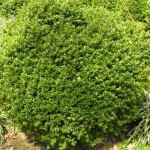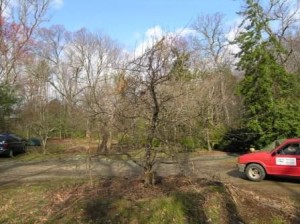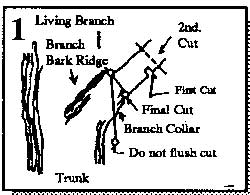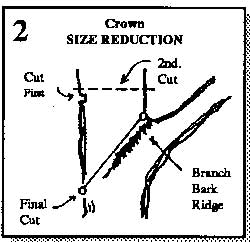Customer Review:
“I have been buying firewood from Stewart for more than 10 years. One of the things I appreciate most is that I can call him, agree on a couple of details and then rely on him to deliver the wood, stack it in the exactly right way in the carport, and remove any mess. I don’t have to be home and I always know that my winter’s worth of wood will appear in just the way Stewart promised. I recommend him without reservation. You can count on Stewart.”
—N.S., Charlottesville
The Burning Facts On Firewood
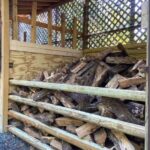 How do you determine the value of the firewood you are buying? It is my opinion that the true value of firewood is really about the buyer’s desire for service and convenience. Most consumers consider the standard “cord” to be the best measurement of value, but I would suggest that it is not the only, nor the best, method of calculating firewood value.
How do you determine the value of the firewood you are buying? It is my opinion that the true value of firewood is really about the buyer’s desire for service and convenience. Most consumers consider the standard “cord” to be the best measurement of value, but I would suggest that it is not the only, nor the best, method of calculating firewood value.
Planting time is here
Spring has sprung.
The rains have come.
And my tree planting has just begun.
With 250 spruce seedlings in hand , when will my job be done?
Each year I order trees from the Virginia state nursery and plant as many trees as I can. I encourage my friends and neighbors to help and I give to my customers a tree or two. Some times I participate in an Arbor Day exercise with grade schools and offer the seedlings to students to take home to plant. I started doing this in 1986 and am a proud caretaker of a 30 foot tree my son planted when he was in the fourth grade. To me planting a tree is an act of kindness and is a way of paying forward to a clean and healthy environment for future generations.
Boxwoods
Boxwood come in many shapes and sizes. There are many cultivar of boxwood though
mostly I see the American boxwood and the English boxwood. The American boxwood is simply the regeneration of the plant by seed where as an English boxwood is the regeneration of a cultivar by rooting a clipping from the selected plant. I have been given an odd boxwood dubbed the Weeping boxwood which has done very well and is an extremely fast grower, about a foot per year. One can generally tell the difference between an American, English and Weeping boxwoods by the shape and structure. The English is a dense slow growing shrub with smaller leaves than the American. The American grows faster and has an open sparse branch [Read more…]
Fruit Tree Pruning
Fruit trees can be pruned at anytime of the year. However, to maximize the development of an eatable fruit it is best to prune before the flower buds break in the spring. Additional pruning and fruit thinning may become necessary during fruit bearing months to prevent limb breakage due to over burdened branches. A well pruned tree having a stout trunk and branch structure can support a bumper crop of fruit without external support or props.Gather together the necessary tools and size up the job at hand. You may need these tools : CHAIN SAW; POLE SAW; POLE PRUNER; LONG HANDLE LOPPERS; HAND PRUNERS; HAND SAW; LADDER
SPRING IS IN THE AIR!
Early spring is a particularly important time for the trees and shrubs in your yard. Because of plants’ yearly life cycle, it’s a good time to prune, plant, transplant and mulch. Here are a few important tips to help you make the most of your spring landscape care.
Pruning
Necessary pruning should be done as soon as can be managed. When pruning large amounts of foliage or more than one third the crown mass, pruning is best done in the cool spring and avoided during the hot dry times of the year.
Planting / Transplanting
As the days grow longer, the temperatures rise and the ground moisture remains high, dormancy gives way to new growth. Spring rains may drive me from the tree tops, but once on the ground I grab my shovel and start lifting small trees and shrubs. [Read more…]
Trees – A Renewable Fuel Resource
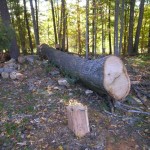 Firewood! Just the thought of it brings to mind warmth, comfort and work. That’s right, a lot of work as one cord of wood weighs over 4000 pounds. And guess how many times it must be handled between stump and hearth. First the tree is felled, cut into fire logs and loaded for transport. Second the logs are split and stacked for seasoning. Third the firewood is loaded for transport to the customer. Fourth the wood is stacked for dry storage until needed. And fifth the log is carried to the fire. That’s five times two tons, or ten tons of lifting for every cord of wood burned. Now I ask you is firewood worth so much work? My answer is yes. [Read more…]
Firewood! Just the thought of it brings to mind warmth, comfort and work. That’s right, a lot of work as one cord of wood weighs over 4000 pounds. And guess how many times it must be handled between stump and hearth. First the tree is felled, cut into fire logs and loaded for transport. Second the logs are split and stacked for seasoning. Third the firewood is loaded for transport to the customer. Fourth the wood is stacked for dry storage until needed. And fifth the log is carried to the fire. That’s five times two tons, or ten tons of lifting for every cord of wood burned. Now I ask you is firewood worth so much work? My answer is yes. [Read more…]
When A Storm Strikes
On June 2, 1989 a storm struck Cismont. Meteorologists called it a microburst and like a wave of hurricane winds it proved to be the most destructive storm I ever witnessed. Countless numbers of trees were damaged and numerous downed trees blocked several miles of highway. As a tree surgeon seeing this event I was awed by the massive destruction of trees and feared personal injury.
This storm was exceptional, however damage from a passing storm occurs often. Here are some helpful tips to minimize damage and injury when a storm strikes.
1. Assess the damage cautiously. Broken wires or hanging tree parts are life threatening.
2. Clear access to public highways. Carefully remove debris making enough space for one vehicle to pass.
3. Check on your neighbor to render assistance. An injured or isolated neighbor may need help.
4. Seek professional advice. When the emergency is over and the job of clean up is at hand an arborist or tree specialist can assist in identifying hidden hazards.
The above information was provided courtesy of The National Arbor Day Foundation.
When is the Best Time to Prune?
Necessary pruning should be done as soon as can be managed. When pruning large amounts of foliage or more than one third the crown mass, pruning should be avoided during the dry hot months. Dead and diseased wood can be removed anytime. The best time to prune is when the tree or shrub is dormant, usually in the winter months.
The images above show the proper way to prune. Images provided courtesy of the Virginia Cooperative Extension Service.
An Act of Kindness
Working together we can make a better place to live and raise our children. Planting a tree is an act of kindness. You may not live to see it mature and yet future generations are going to appreciate it. Trees provide refreshed oxygen, carbon dioxide filtration, water purification, wood products, renewable fuel and wildlife habitat. Planting a tree can be as easy as scratching the earth and burying a seed. Happy planting.
If you need help with planting trees and shrubs, give us a call.
